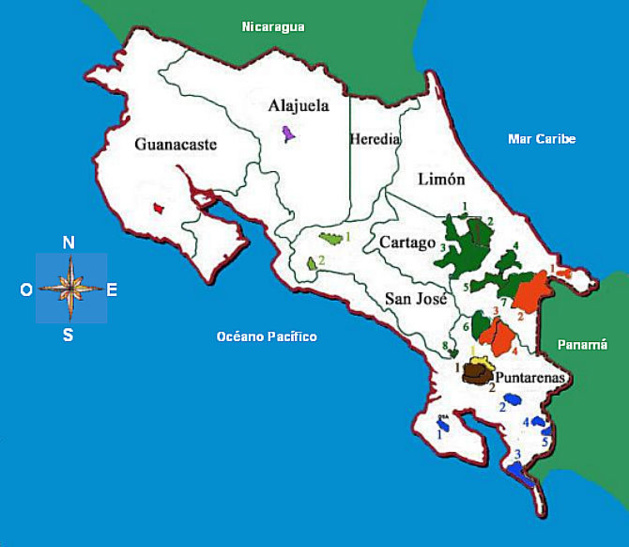The seven Indo-Costa Rican languages are in danger of disappearing. “This languages are in danger of disappearing because the context of use continues to reduce, and its transmission has ceased completely or shows signs of drastic decrease”, announces Carlos Sánchez, researchers of Linguistics of the University of Costa Rica (UCR) in a study published in the magazine Káñina, dedicated to the aforementioned university.
In this study, Sánchez did a review of the researches carried out to date in order to determine the state of the Indo-Costa Rican languages. In this regard, it is known that in Costa Rica there are still speakers of Bribri, Buglere, Brunca (or Boruca), Cabécar, Malecu (or Guatuso), Ngöbe (or Guaymí) and Teribe (or Térraba).
However, all languages undergo the loss of speakers, since those who speak these languages use Spanish to solve day-to-day matters, such as commercial transactions, access to public services, or education.
In this regard, the country has two languages already considered as extinguished (Chorotega and Huetar), and other two in an obsolescence state (Boruca and Térraba), the previous stage to extinction.
According to the census of 2011, 104,143 indigenous people live in Costa Rica, only the 2.4% of the population. Of these total, the 34.5% still lives in the 24 indigenous territories, the 14.4% lives in the suburbs, and the 51%, in the rest of the country.
The 60% of the people that lives in the indigenous territories speaks the local language, as well as the 26.7% of those who live in the suburbs, and the 11.5% of those who live in the rest of the country.
The people identified as Bribris, Cabécares, and Guaymíes are those who speak their native languages the most, no matter where they live. The opposite happens with the Malecus.
The census shows that Guaymíes and Cabécares are those who practice their language the most (some groups, above the 80%).
With regards to cantons, the settlers that speak any Indo-Costa Rican language above the 50% are located in Talamanca, Matina, Coto Brus, Guatuso, Tarrazú, and León Cortés.
Más información
In this study, Sánchez did a review of the researches carried out to date in order to determine the state of the Indo-Costa Rican languages. In this regard, it is known that in Costa Rica there are still speakers of Bribri, Buglere, Brunca (or Boruca), Cabécar, Malecu (or Guatuso), Ngöbe (or Guaymí) and Teribe (or Térraba).
However, all languages undergo the loss of speakers, since those who speak these languages use Spanish to solve day-to-day matters, such as commercial transactions, access to public services, or education.
In this regard, the country has two languages already considered as extinguished (Chorotega and Huetar), and other two in an obsolescence state (Boruca and Térraba), the previous stage to extinction.
According to the census of 2011, 104,143 indigenous people live in Costa Rica, only the 2.4% of the population. Of these total, the 34.5% still lives in the 24 indigenous territories, the 14.4% lives in the suburbs, and the 51%, in the rest of the country.
The 60% of the people that lives in the indigenous territories speaks the local language, as well as the 26.7% of those who live in the suburbs, and the 11.5% of those who live in the rest of the country.
The people identified as Bribris, Cabécares, and Guaymíes are those who speak their native languages the most, no matter where they live. The opposite happens with the Malecus.
The census shows that Guaymíes and Cabécares are those who practice their language the most (some groups, above the 80%).
With regards to cantons, the settlers that speak any Indo-Costa Rican language above the 50% are located in Talamanca, Matina, Coto Brus, Guatuso, Tarrazú, and León Cortés.
Más información



 English
English



